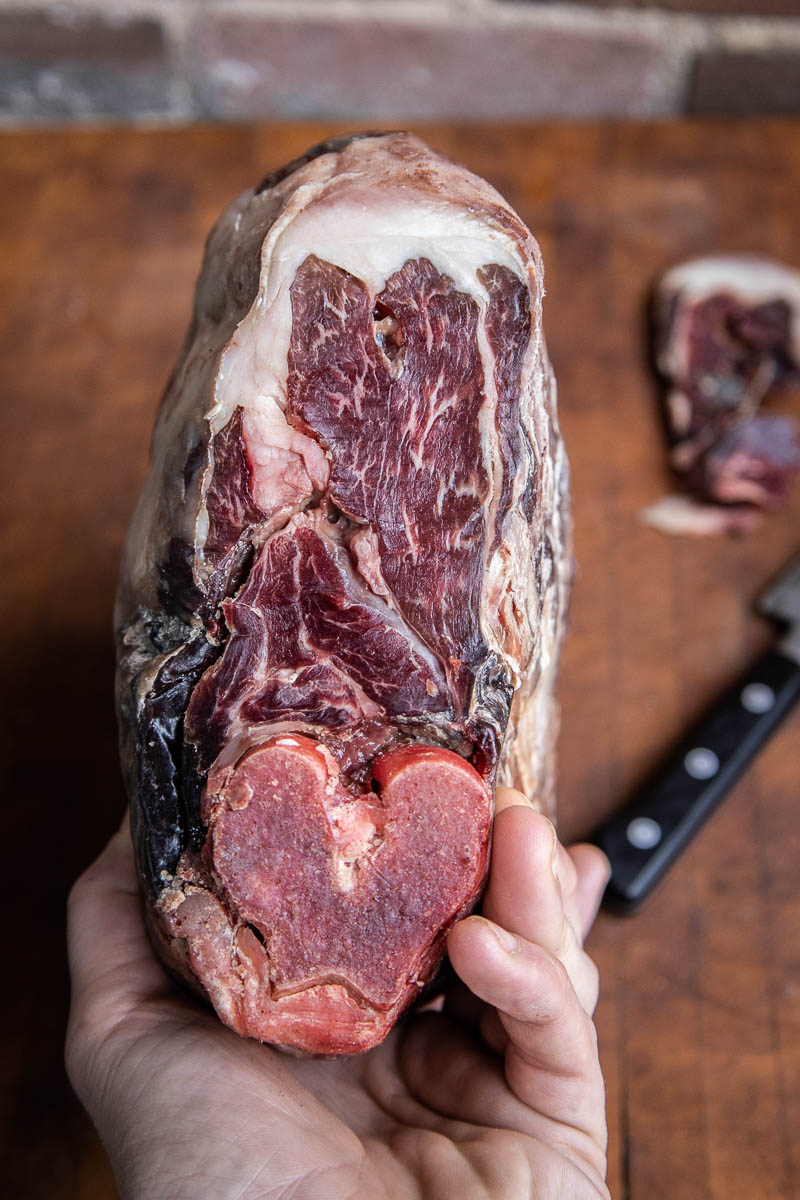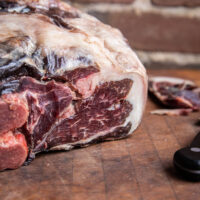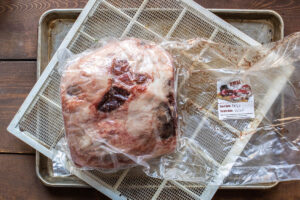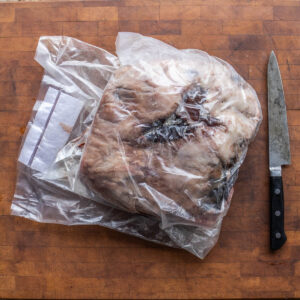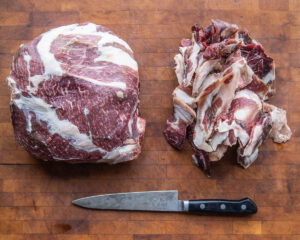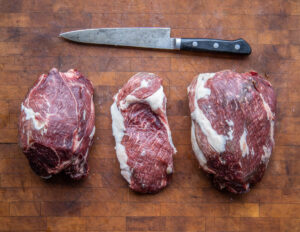How to Make Dry-Aged Mutton or Lamb Leg
Ever wondered how to dry age mutton or lamb at home, or if it’s even possible? It is, with a few caveats. This post is a brief overview of the dry-aging process specifically geared toward lamb, hogget, and mutton using UMAi Dry bags. For more detailed information on different meats, see my other post on dry-aging meat and venison.
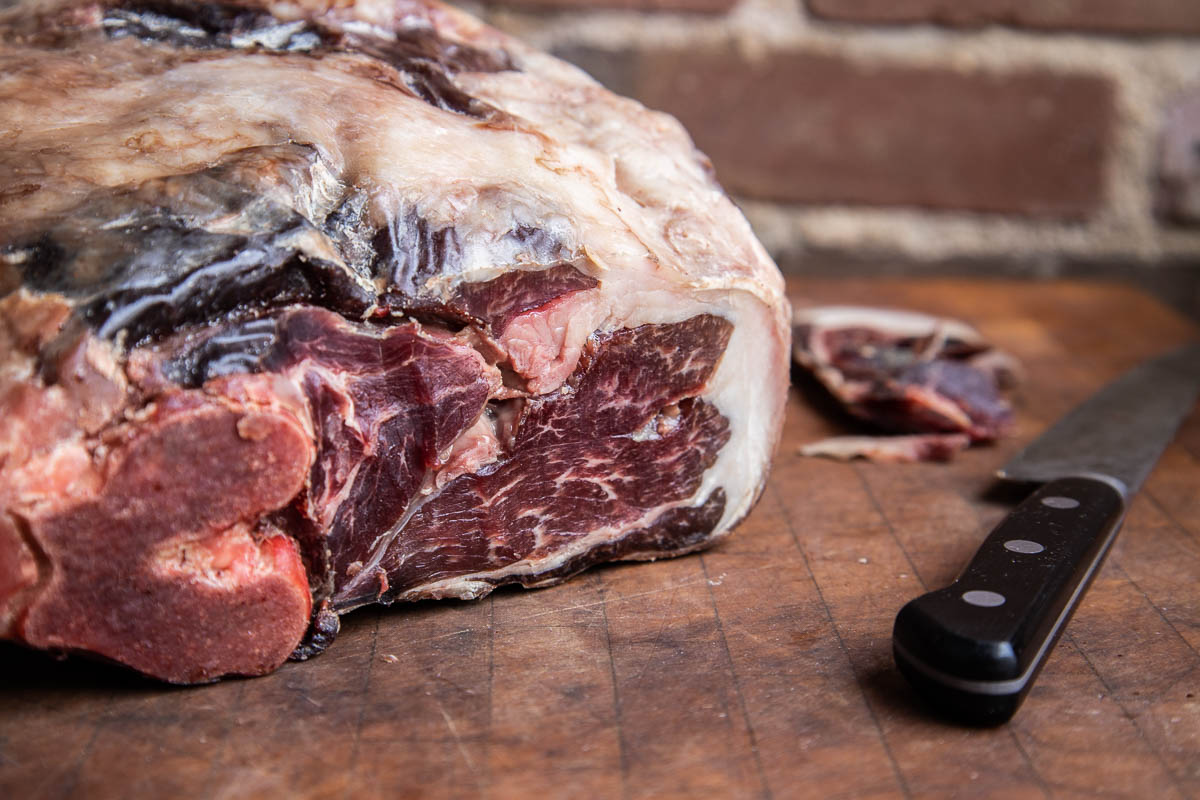
If you’ve ever seen the price tag of a dry-aged steak at a restaurant, the words dry-aged may have piqued your curiosity—it’s expensive, really expensive. It’s nothing to pay 100$ to order a cut of dry aged beef at a nice restaurant, and that can be on the cheaper side of things, depending on what cut you order and from where.
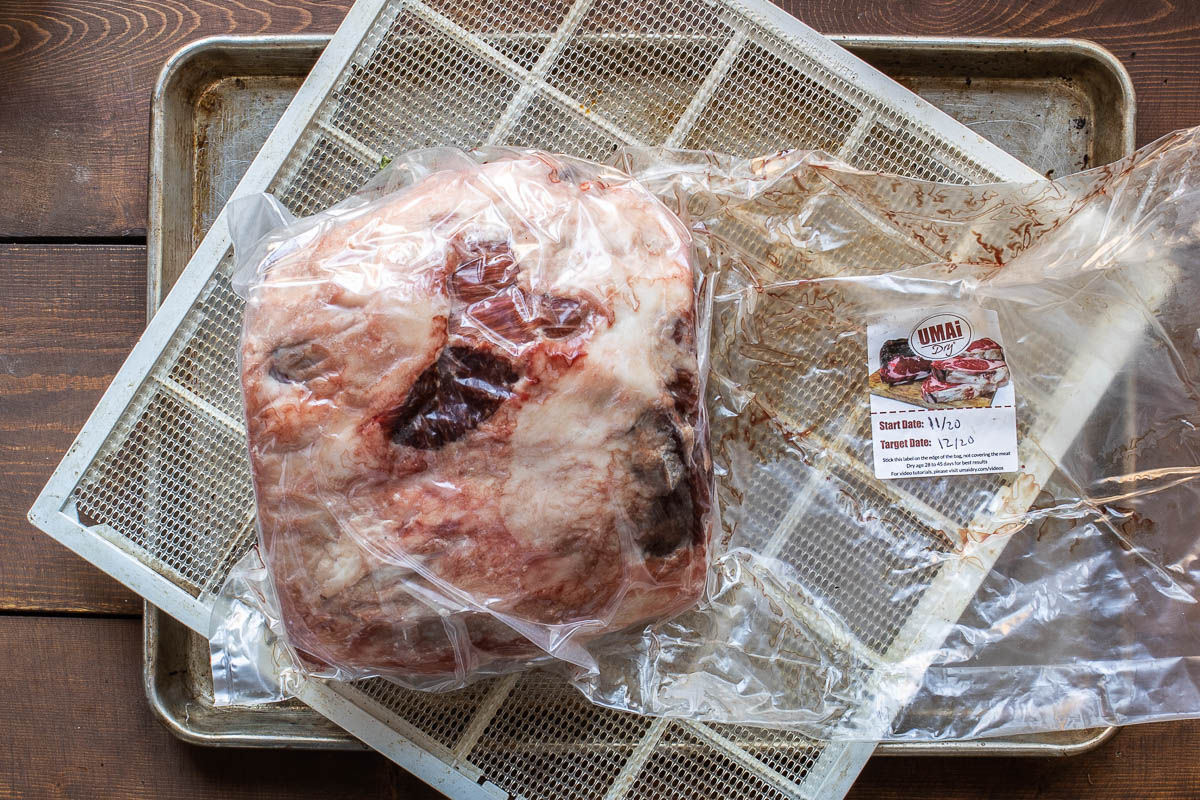
The reason is because true dry aging involves evaporation of water, forming an external crust or pellicle on the meat which must be trimmed, causing the meat to lose weight. Wet-aged lamb isn’t the same and won’t have the same flavour profile. Lamb from Australian farmers will also have a much stronger, gamey flavor than meat lamb raised by Shepherd Song Farm.
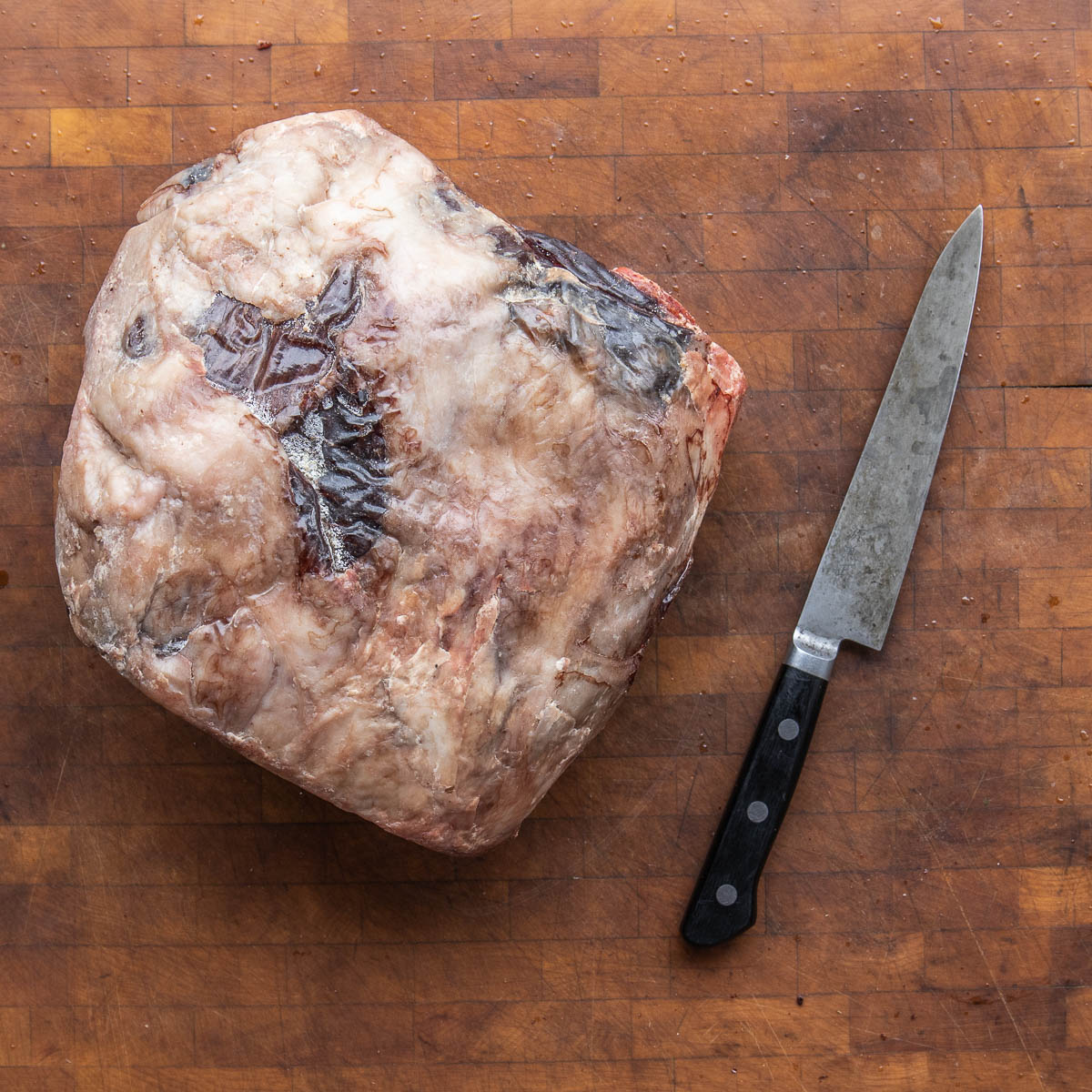
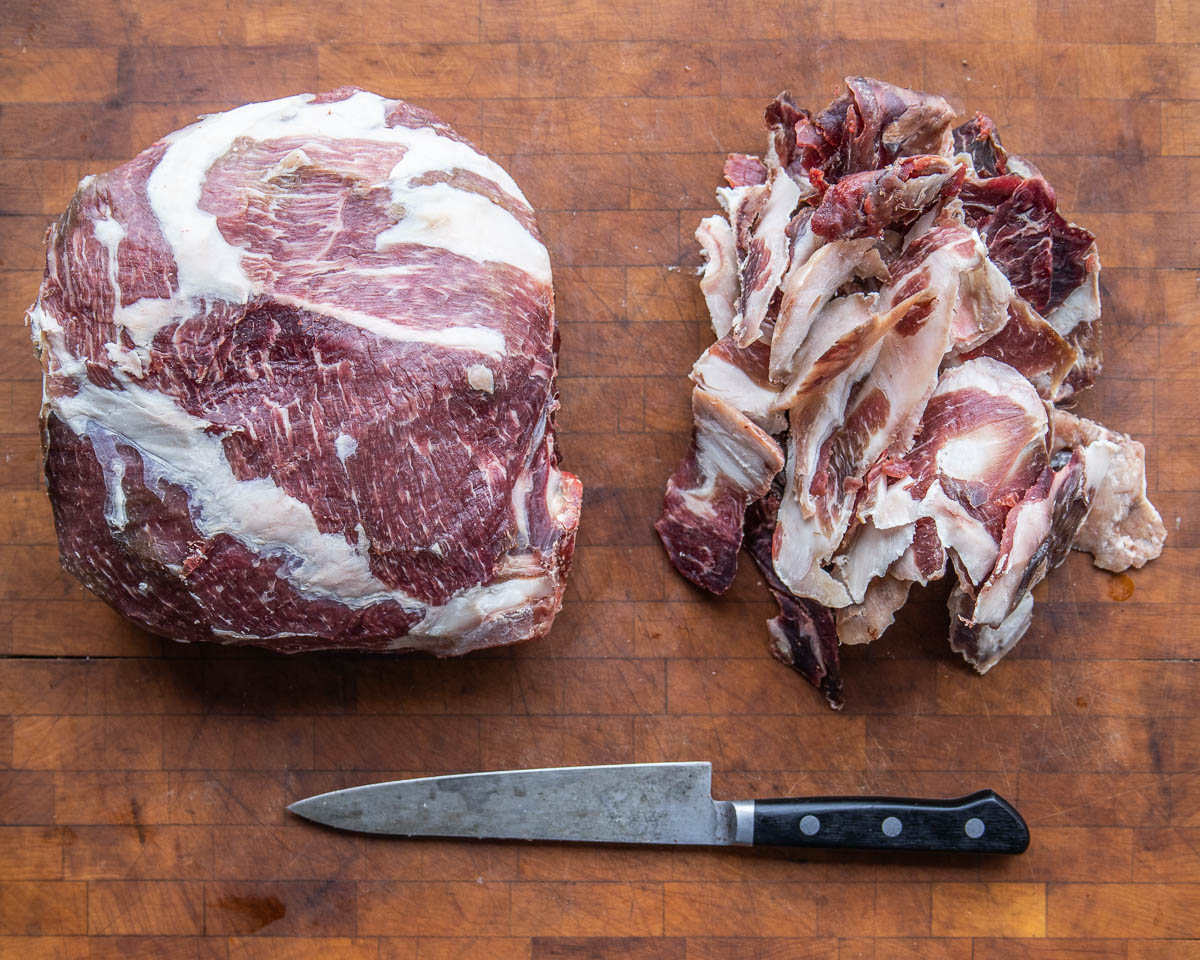
What’s so great about dry-aged meat?
What’s makes dry aged meat good? Why is it more expensive? Besides the loss of weight, in short, dry aging breaks down meat in a natural way over a period of time (generally at least 30 days), causing it to become more tender and develop additional, complimentary flavors. Basically, it’s a luxury good, a delicacy, and, at home, it can also make for a really fun DIY meat project.
Dry aged mutton is preferable to lamb
With websites and restaurants in the know, beef is the most common meat that’s dry-aged, but you can definitely age lamb. The catch with dry-aging lamb is that lamb is small, and naturally tender, so, a much better option is to source hogget or mutton. Hogget and mutton are older, and larger than lamb, so you won’t be left with a tiny piece of meat left over after trimming off the pellicle that forms as the meat dries.
Out of the two options, mutton is probably the best since they will have the biggest legs to age—I recommend a leg that’s at the very least, 6-7 pounds minimum weight. Occasionally Shepherd Song will have mutton available, but as it’s not requested often you’ll want to contact us to make sure we can get it ready for you and let you know what the timeline for ordering will look like.
Can you age cuts other than a leg?
Yes, you can. But, the leg is going to give you the best yield after trimming, so it’s what I suggest starting out with. If you really want to get creative, I’ve also aged a whole loin/saddle roast, but it won’t have as good of a yield as a leg. If you like the idea of aging a whole mutton leg, and like cured meat / charcuterie, too, you might also want to give me aged Fenelar / Lamb Country Ham a shot.
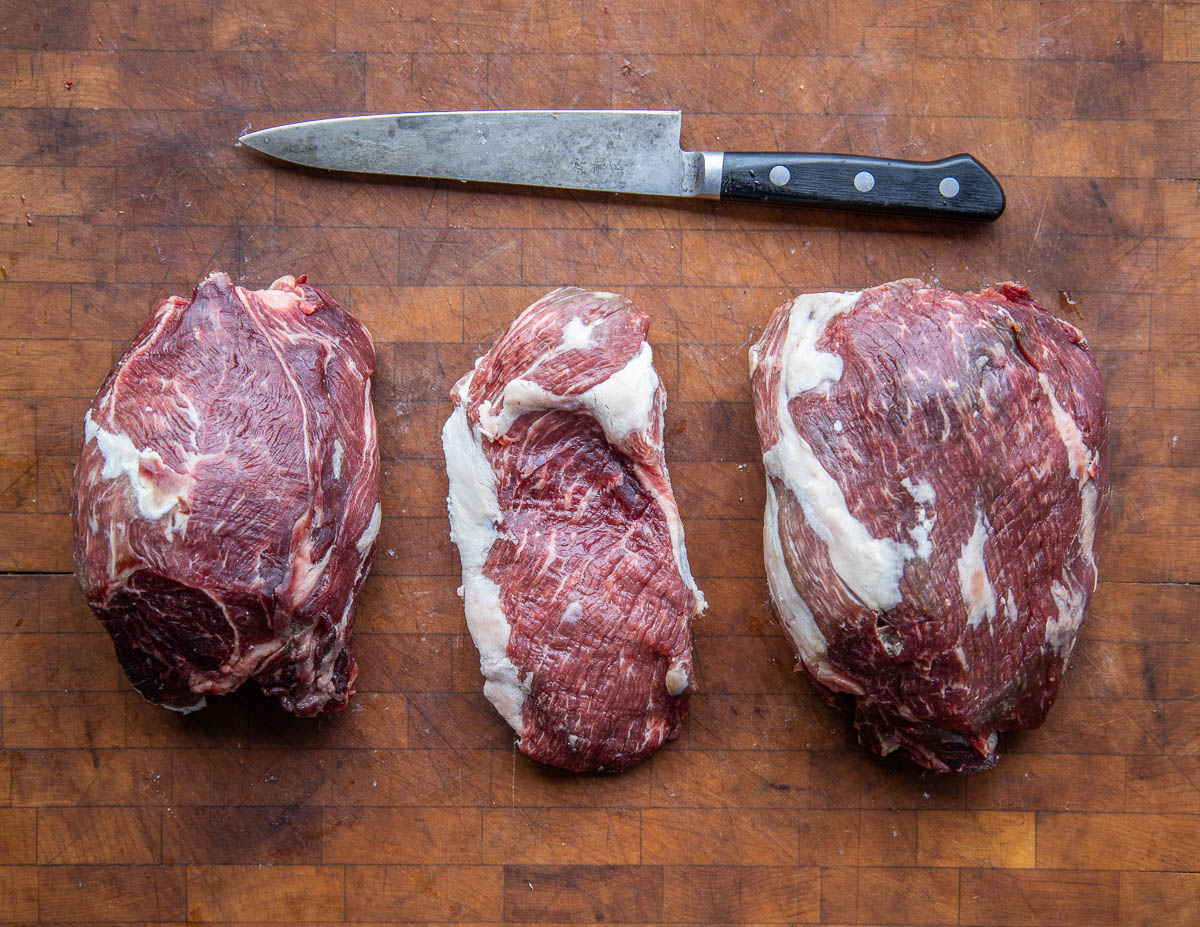

This recipe is by chef Alan Bergo. A chef from Minnesota, Alan is a culinary industry veteran, former executive chef of acclaimed Lucia’s Restaurant, and the Salt Cellar. Founder of the website Forager Chef, he’s best known as a respected authority on Midwestern foraging. Learn more about chef Alan and his hunt for mushrooms, wild and obscure foods at Forager Chef®.
Looking to buy mutton online? Shepherd Song Farm: Grass to table. We raise lambs & goats traditionally, humanely and sustainably. 100% Grass Fed, Pasture Raised, Never Confined, no Hormones, Grains or Animal Byproducts. Born, raised and processed in the U.S.A. Good for you and good for the environment.
Related Posts
How to Make Dry-Aged Mutton or Lamb Leg
Equipment
- 1 Large brisket aging bag from Umai Dry
- 1 Baking sheet with rack
Materials
- 1 7 lb Leg of Mutton
Instructions
Sealing
- Thaw the mutton leg (if frozen) completely, then remove from the package and pat dry very well.
- Put the leg of mutton in the UMAi bag, then seal one of the corners at a 45 degree angle as shown in the video.
- Put the vac mouse in the opening and seal the bag as well as you can. A perfect vacuum seal is not necessary.
Aging
- Leave the meat in the bag in the refrigerator (not a mini-fridge) resting on a rack or somehow propped up to allow air-flow, turning occasionally to ensure even evaporation.

- Leave the meat in the bag for 30 days.

Trimming and enjoying
- After thirty days, trim the leg of the dried meat, which you can roast and save it to add to stock if you like.

- From here you can roast the leg whole for a special occasion, or cut it into small roasts as pictured, vacuum seal, and freeze.

Video
Notes
